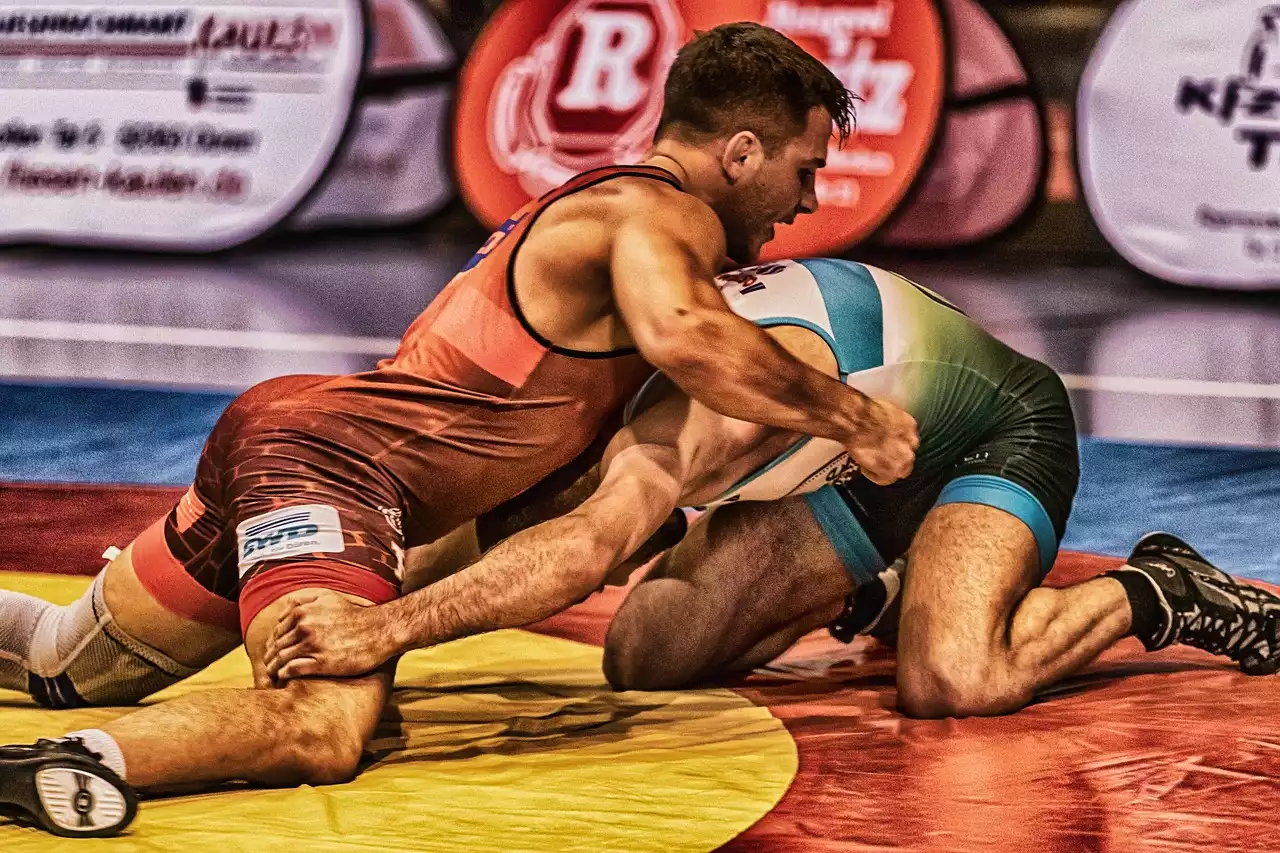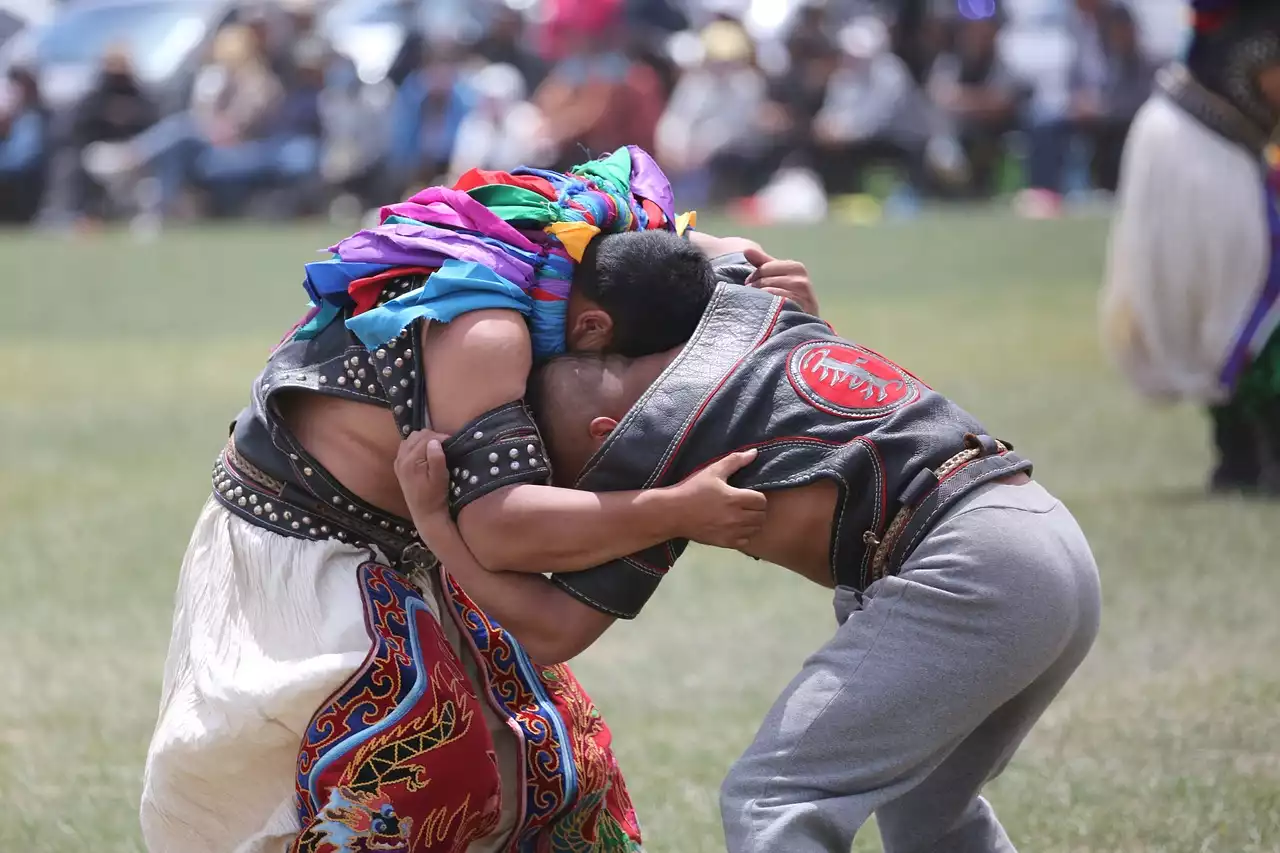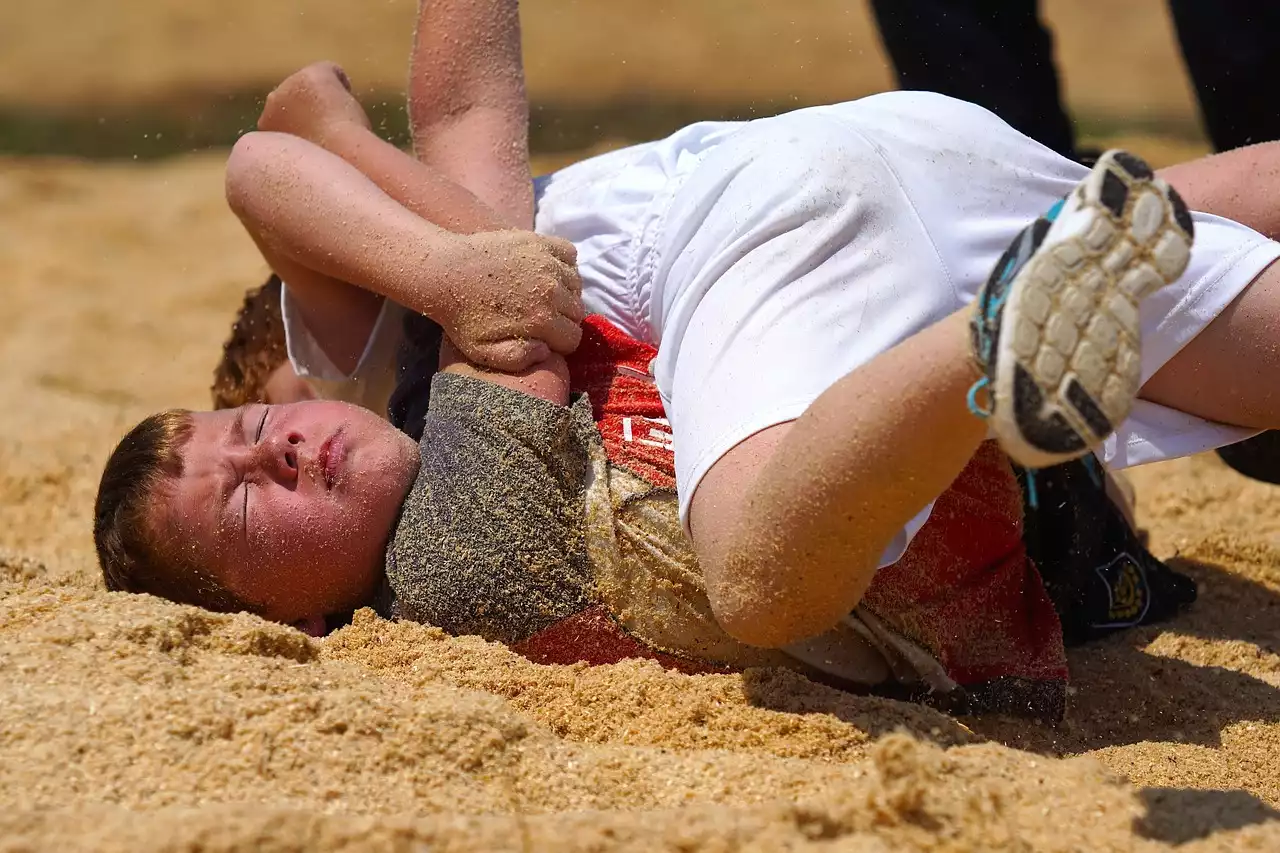Folkstyle Wrestling
Folkstyle wrestling is the most common type of wrestling in the United States and is widely practiced in high schools and colleges. The objective of folkstyle wrestling is to pin your opponent's shoulders to the mat for a specified amount of time. There are three periods of wrestling, each lasting two minutes, and the wrestler with the most points at the end of the third period wins the match.
Scoring in folkstyle wrestling is based on takedowns, escapes, reversals, near falls, and pins. A takedown is when a wrestler takes their opponent down to the mat and gains control. An escape is when a wrestler breaks free from their opponent's control and stands up. A reversal is when a wrestler who is on the bottom gains control of their opponent. A near fall occurs when a wrestler is on their back, but their shoulders are not touching the mat. A pin occurs when a wrestler holds their opponent's shoulders to the mat for a specified amount of time.
In folkstyle wrestling, there are ten weight classes for high school wrestlers and eleven weight classes for college wrestlers. The weight classes range from 106 pounds to heavyweight, and each wrestler must weigh in before the match to ensure that they are competing in the correct weight class.
Freestyle Wrestling
Freestyle wrestling is an Olympic sport and is similar to folkstyle wrestling. The objective of freestyle wrestling is to pin your opponent's shoulders to the mat for a specified amount of time. However, in freestyle wrestling, there are only two periods of wrestling, each lasting three minutes. The wrestler with the most points at the end of the second period wins the match.
Scoring in freestyle wrestling is based on takedowns, reversals, exposure points, and pins. Exposure points are awarded when a wrestler exposes their opponent's back to the mat, and the number of points awarded depends on the amount of exposure. Unlike folkstyle wrestling, there are no near falls in freestyle wrestling.
Freestyle wrestling has six weight classes for men and six weight classes for women. The weight classes range from 57 kg to heavyweight for men and 50 kg to heavyweight for women.
Greco-Roman Wrestling
Greco-Roman wrestling is another Olympic sport and is the oldest form of wrestling. In Greco-Roman wrestling, wrestlers are not allowed to attack their opponent's legs or use their own legs to trip or lift their opponent. The objective of Greco-Roman wrestling is to pin your opponent's shoulders to the mat for a specified amount of time. There are two periods of wrestling, each lasting three minutes, and the wrestler with the most points at the end of the second period wins the match.
Scoring in Greco-Roman wrestling is based on takedowns, reversals, exposure points, and pins. However, unlike freestyle wrestling, exposure points are only awarded when a wrestler exposes their opponent's back to the mat without using their legs.
Greco-Roman wrestling has six weight classes for men and six weight classes for women. The weight classes range from 55 kg to heavyweight for men and 50 kg to heavyweight for women.
Collegiate Wrestling
Collegiate wrestling is a form of folkstyle wrestling that is practiced in colleges and universities in the United States. Collegiate wrestling is similar to high school wrestling, but the rules and regulations are slightly different. The objective of collegiate wrestling is to pin your opponent's shoulders to the mat for a specified amount of time. There are three periods of wrestling, each lasting two minutes, and the wrestler with the most points at the end of the third period wins the match.
Scoring in collegiate wrestling is based on takedowns, escapes, reversals, near falls, and pins. However, unlike high school wrestling, there are no riding time points in collegiate wrestling. Riding time points are awarded to the wrestler who has the most time in control of their opponent.
Collegiate wrestling has ten weight classes, ranging from 125 pounds to heavyweight. Each wrestler must weigh in before the match to ensure that they are competing in the correct weight class.
High School Wrestling
High school wrestling is a form of folkstyle wrestling that is widely practiced in the United States. The objective of high school wrestling is to pin your opponent's shoulders to the mat for a specified amount of time. There are three periods of wrestling, each lasting two minutes, and the wrestler with the most points at the end of the third period wins the match.
Scoring in high school wrestling is based on takedowns, escapes, reversals, near falls, and pins. However, unlike collegiate wrestling, there are riding time points in high school wrestling. Riding time points are awarded to the wrestler who has the most time in control of their opponent.
High school wrestling has fourteen weight classes, ranging from 106 pounds to heavyweight. Each wrestler must weigh in before the match to ensure that they are competing in the correct weight class.
Wrestling Rules and Scoring
Each type of wrestling has its own unique rules and scoring system, but there are some common rules and regulations that apply to all types of wrestling. For example, wrestlers are not allowed to attack their opponent's eyes, ears, or groin. They are also not allowed to use any prohibited moves, such as the full nelson or the piledriver. If a wrestler uses a prohibited move, they will be disqualified from the match.
In addition to the prohibited moves, there are also certain holds and positions that are worth points in wrestling. For example, in folkstyle wrestling, a near fall is worth two points, and a pin is worth six points. In freestyle wrestling, a takedown is worth two points, and a pin is worth five points. In Greco-Roman wrestling, a takedown is worth two points, and a pin is worth four points.
Wrestling Weight Classes
Each type of wrestling has its own weight classes, and wrestlers must weigh in before the match to ensure that they are competing in the correct weight class. The number of weight classes and the weight limits vary depending on the type of wrestling. For example, in high school wrestling, there are fourteen weight classes, ranging from 106 pounds to heavyweight. In freestyle wrestling, there are six weight classes for men and six weight classes for women, ranging from 57 kg to heavyweight for men and 50 kg to heavyweight for women.
Wrestling Gear and Equipment
Wrestlers are required to wear certain gear and equipment during matches. This includes a singlet, wrestling shoes, and headgear. A singlet is a tight-fitting one-piece suit that covers the wrestler's torso and legs. Wrestling shoes are designed to provide traction on the mat and are lightweight and flexible. Headgear is worn to protect the wrestler's ears and head from injury.
Famous Wrestling Competitions and Wrestlers
There have been many famous wrestling competitions and wrestlers throughout history. The Olympic Games feature some of the best wrestlers from around the world, and many wrestlers have become legends in their respective countries. Some of the most famous wrestlers in history include Dan Gable, John Smith, Aleksandr Karelin, and Cael Sanderson.










